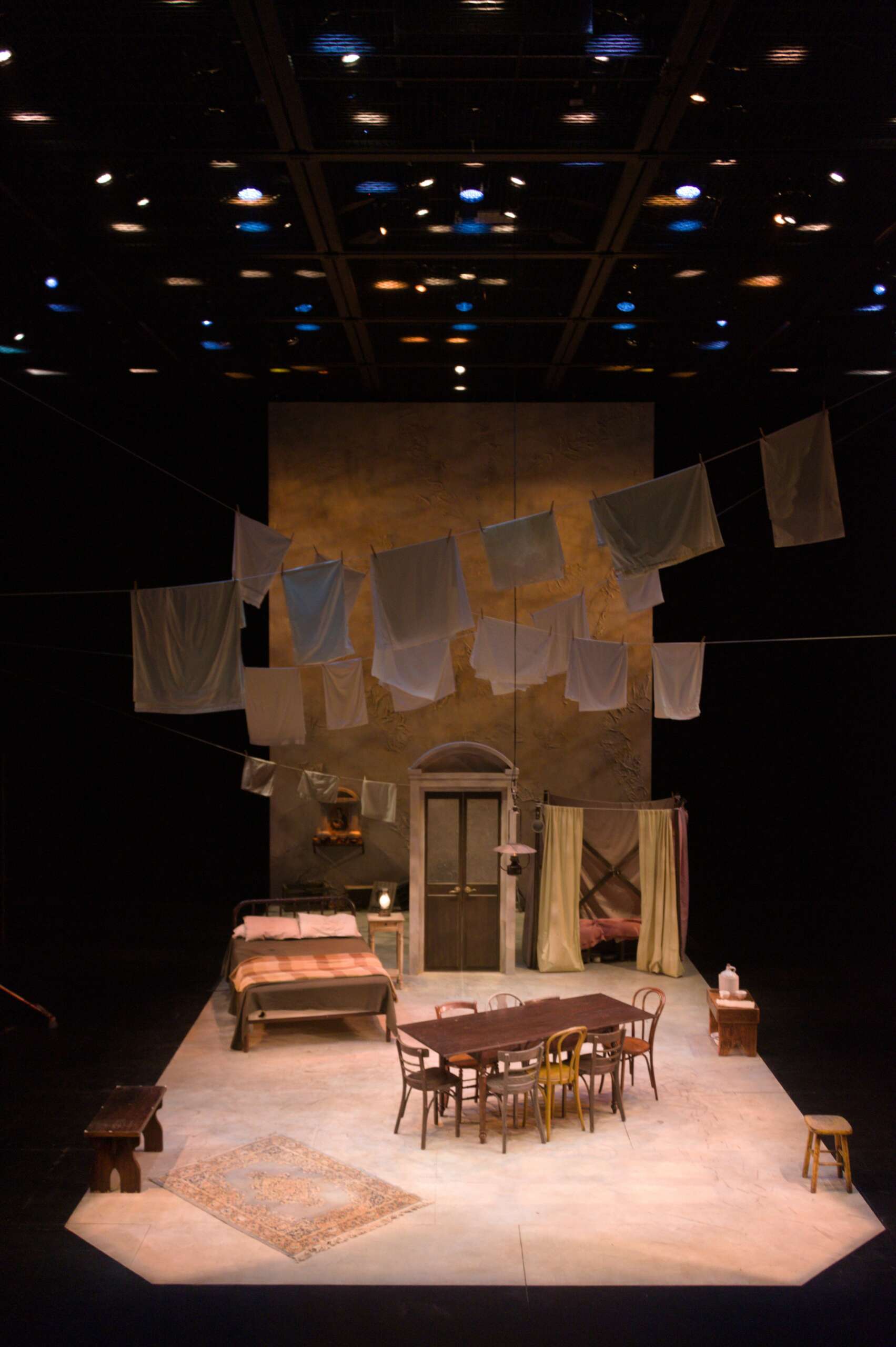We recently connected with Michael Wogulis and have shared our conversation below.
Michael, appreciate you joining us today. Can you talk to us about a project that’s meant a lot to you?
In my second year of graduate school, I had the opportunity to work on a brand new play called ‘Hells Canyon’ by Keiko Green. Before having been assigned to the project, I had seen a staged reading of it and immediately fell in love with the script. It was incredibly complex, both thematically and technically and I knew that if I did it, it would be the most challenging play I’d ever done.
This show came to me at a time when I was still trying to develop my identity as a designer and I felt like it was an opportunity to step up and prove to myself that I knew what I was doing. It was an intense process full of tons of discoveries and challenges to overcome, and there were times when I admittedly had doubts about what I was doing. But once we opened and could see these hugely positive responses coming from our audiences, I could tell that we created something really special. It gave me a lot of confidence going forward to trust my instincts as a designer, and not be afraid to take on big artistic challenges and risks. To this day I consider ‘Hells Canyon’ to be one of the shows I’m most proud of.


As always, we appreciate you sharing your insights and we’ve got a few more questions for you, but before we get to all of that can you take a minute to introduce yourself and give our readers some of your back background and context?
I’m a scenic designer who works primarily in theatre and live performance. As a scenic designer, my job in a production is essentially to establish the world of the play through its physical environment. I use a variety of mediums such as scale models, digital mock-ups, and technical drawings to help me generate my ideas and communicate them to a team of collaborators before working with crews of technicians, carpenters, and painters that will build my designs and bring them to life. It’s a position as technical as it is artistic.
Scenic design was something I sort of stumbled into. In my undergrad, I knew I had a strong passion for theatre, but I didn’t know exactly through what outlet I wanted to channel that passion. I tried stage management, directing, and even a little playwriting before I really discovered a love for design, simply by taking an introductory course in it. Pretty quickly I started taking more advanced classes, assisting graduate students on productions, and eventually designing some shows myself. It led me to where I am today, where I now have a master’s degree in the subject and am working professionally in the field.
In my work, I often find myself drawn to a more expressionistic approach to design, trying to invoke what an environment feels like rather than always trying to recreate something from the real world. To me, what makes theatre unique as a medium is how centers our relationship to physical space as part of the experience. The exciting thing about scenic design is the ways in which we can tap into that relationship to see the world through new and unexpected perspectives.


For you, what’s the most rewarding aspect of being a creative?
The most rewarding part of my work I would say is the collaborative process. One of the things I love about doing theatre is that my work is never fully my own, it’s always informed by the work of other people. As a scenic designer, I’m often one of the first people to begin work on a production, so I can sometimes start a process with certain expectations of what a show may look or feel like. But then eventually, the director may start staging things on the set in unexpected ways, or the lighting designer may transform the stage in a way I never thought possible. And in the end, when everyone’s work comes together, the show is often completely different than the one I had in my head. What’s so rewarding to me isn’t just the things that I do on my own, but the ways that my work comes together with the work of all my collaborators to create something even greater than the sum of its parts.


Is there mission driving your creative journey?
I’m always driven by a desire to be doing something new. Every time I sign on to a project I try to think of what I want to get out of this process, whether that’s working in a different style than I’m used to, working in a new genre or medium, or even just getting to work with new collaborators. I feel really lucky that in my still very early career, I’ve already gotten to be part of such a wide breadth of work, but there are still so many things that I want to try. Long term, I really want to be the kind of designer who gets to travel a lot for work. There are so many exciting regional theatres across the country, and so many incredible artists that I’m just dying to work with. It would be a dream to be able to constantly experience new places and work with new people throughout my career like that. I feel like if I’m always searching for something different, I’ll never get tired of what I do.

Contact Info:
- Website: michaelwogulis.com
- Instagram: @mwogulis
Image Credits
Michael Wogulis, Russell Chow, Tzu-Yu Su, Kristina Stahl


